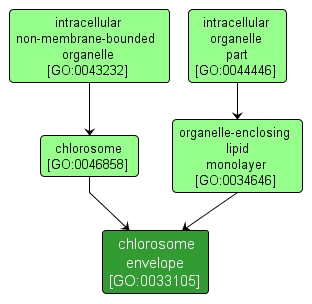GO TERM SUMMARY
|
| Name: |
chlorosome envelope |
| Acc: |
GO:0033105 |
| Aspect: |
Cellular Component |
| Desc: |
The structure, composed of a monolayer of glycolipids with embedded proteins, that encloses the pigments and other contents of the chlorosome. |
| Synonyms:
|
|

|
INTERACTIVE GO GRAPH
|














